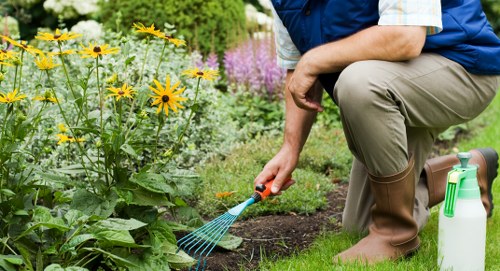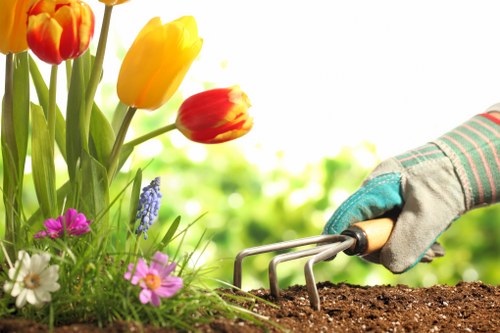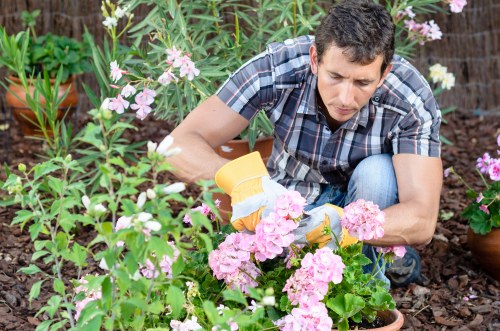Comprehensive Guide to Tree Lopping and Removal for Gardeners
Understanding Tree Lopping and Removal

Tree lopping and removal are essential practices in gardening and arboriculture, ensuring the health and safety of your garden environment. Proper tree maintenance not only enhances the aesthetic appeal of your garden but also prevents potential hazards associated with overgrown or damaged trees.
Lopping involves the selective cutting of branches to control a tree’s shape and size, promoting healthier growth. Removal, on the other hand, is the complete extraction of a tree from its root system, typically necessary when a tree poses a risk or has become unmanageable.
Effective tree lopping and removal require knowledge of tree biology, proper tools, and adherence to safety protocols. Whether you're a professional gardener or a DIY enthusiast, understanding these processes can significantly impact the vitality of your garden.
When to Consider Tree Lopping

Deciding when to lop a tree depends on several factors, including the tree’s health, growth rate, and impact on the surrounding environment. Common situations that may necessitate lopping include:
- Overgrowth: When a tree becomes too large for its location, encroaching on structures or power lines.
- Health Issues: Infestations, diseases, or pest damage that can be managed through selective branch removal.
- Safety Concerns: Weak or dead branches that pose a risk during storms or high winds.
Regular inspections can help identify the need for lopping early, preventing minor issues from escalating into major problems.
Tree Removal: When is it Necessary?

Tree removal is a more drastic measure and is typically considered when a tree is beyond repair or poses significant risks. Scenarios where removal is necessary include:
- Structural Damage: Trees that have caused damage to buildings, walkways, or other structures.
- Disease or Decay: Severe infections or extensive root rot that cannot be treated effectively.
- Obstruction: Trees blocking essential pathways, sunlight, or interfering with other plants in your garden.
Before proceeding with removal, it is crucial to consult with a professional arborist to assess the situation and explore alternative solutions.
Benefits of Professional Tree Services

Hiring professional tree lopping and removal services offers numerous advantages:
- Expertise: Trained arborists have the knowledge to assess tree health and determine the best course of action.
- Safety: Professionals use specialized equipment and follow safety protocols to prevent accidents.
- Efficiency: Experienced teams can complete the job more quickly and effectively than DIY methods.
Investing in professional services ensures that tree maintenance is handled correctly, preserving the beauty and safety of your garden.
DIY Tree Lopping Tips

For those who prefer to undertake tree lopping themselves, here are some essential tips:
- Use the Right Tools: Ensure you have quality pruning shears, loppers, and a reliable ladder.
- Understand Tree Structure: Learn how to identify and remove dead or diseased branches without harming the tree.
- Follow Safety Practices: Wear protective gear and be cautious when climbing or handling sharp tools.
While DIY lopping can be rewarding, know your limits and consult a professional if the task becomes too complex or hazardous.
Environmental Considerations

Tree lopping and removal have environmental implications. Responsible practices ensure minimal impact on the ecosystem:
- Preserve Biodiversity: Retain branches and trees that provide habitats for wildlife.
- Prevent Soil Erosion: Maintain root systems to avoid soil displacement and preserve garden integrity.
- Promote Healthy Growth: Proper pruning supports the overall health of remaining trees and plants.
Balancing garden aesthetics with environmental responsibility fosters a sustainable and thriving outdoor space.
Choosing the Right Time for Tree Maintenance

Timing is crucial for effective tree lopping and removal. The best periods vary depending on the tree species and local climate:
- Dormant Season: Late fall or winter when trees are not actively growing, reducing stress.
- After Storms: Assessing any damage immediately ensures swift action to prevent further issues.
- Pre-Bloom: Just before trees begin their growth cycle to promote healthier development.
Proper timing enhances the success of maintenance efforts and supports the long-term health of your garden.
Cost Factors in Tree Lopping and Removal

The cost of tree lopping and removal varies based on several factors:
- Tree Size: Larger trees require more labor and equipment, increasing expenses.
- Location: Trees situated near structures or power lines may necessitate specialized techniques.
- Accessibility: Difficult-to-reach trees demand more effort and resources, impacting costs.
Obtaining multiple quotes from reputable service providers helps ensure fair pricing and quality work.
Regulations and Permits

Before undertaking tree removal, it's essential to be aware of local regulations and permit requirements. Many municipalities have specific laws to protect certain tree species and overall urban greenery:
- Protected Species: Some trees are legally protected, and their removal may require special permissions.
- Permit Applications: Large-scale removals often necessitate permits to ensure compliance with environmental standards.
- Landowner Responsibilities: Property owners must adhere to guidelines to avoid legal repercussions.
Consulting with local authorities or professional arborists can provide clarity on the necessary steps for compliant tree maintenance.
Post-Removal Garden Care

After removing a tree, proper garden care is vital to restore and maintain the area:
- Soil Restoration: Replace removed roots with nutritious soil to support new plant growth.
- Planting Alternatives: Introduce new trees or shrubs that complement the garden’s design and ecological balance.
- Regular Maintenance: Continue routine care to ensure the garden remains healthy and vibrant.
Thoughtful post-removal actions enhance the overall appeal and sustainability of your gardening space.
Choosing the Right Arborist
[IMG_11]Selecting a qualified arborist is crucial for effective tree lopping and removal. Consider the following when making your choice:
- Certifications: Ensure the arborist holds relevant certifications, such as ISA Certified Arborist.
- Experience: Look for professionals with a proven track record in tree maintenance.
- Insurance: Verify that the arborist has appropriate insurance to cover any potential damages.
Engaging a reputable arborist provides peace of mind and guarantees quality service for your garden’s needs.
Environmental Benefits of Proper Tree Management
[IMG_12]Effective tree management contributes positively to the environment:
- Carbon Sequestration: Healthy trees absorb carbon dioxide, reducing greenhouse gases.
- Biodiversity Support: Well-maintained trees provide habitats for various species.
- Air Quality Improvement: Trees filter pollutants, enhancing overall air quality.
Commitment to responsible tree care fosters a healthier and more sustainable ecosystem.
Final Thoughts on Tree Lopping and Removal
[IMG_13]Tree lopping and removal are intricate processes that play a significant role in gardening and landscape management. Proper execution ensures the safety, health, and beauty of your garden. Whether opting for professional services or undertaking DIY maintenance, understanding the principles and best practices is essential.
By prioritizing responsible tree care, gardeners can cultivate thriving outdoor spaces that harmonize with nature and provide enduring enjoyment.
Ready to enhance your garden’s health and beauty? Contact us today to book your tree lopping or removal service and experience expert care tailored to your needs.



